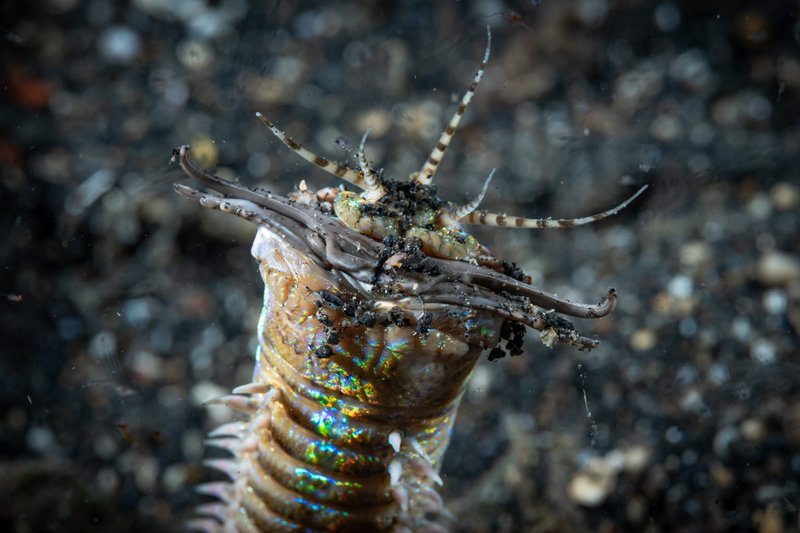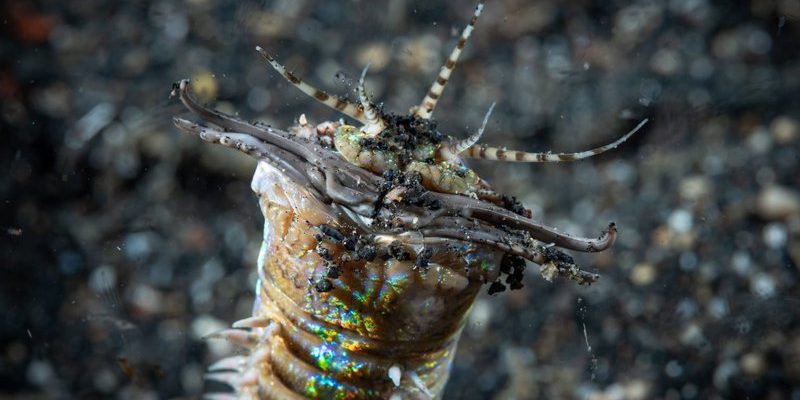
Now, you might be wondering what the fuss is all about. Are bobbit worms really dangerous to humans? Or are these sea creatures just misunderstood? In this article, we’ll dive deep (pun intended!) into the myths and facts surrounding bobbit worms. So grab your favorite drink, and let’s get started on this underwater adventure.
What Exactly Is a Bobbit Worm?
Bobbit worms, or *Eunice aphroditois*, are fascinating marine creatures typically found in tropical waters. Picture them as snake-like organisms that blend into the ocean floor, often hiding in sand or mud. These guys have a striking appearance, with bright colors that can range from greens and browns to vibrant reds and purples. They’re like the ocean’s hidden gemstones!
Despite their beauty, bobbit worms are known for their impressive hunting skills. With a mouth that can snap shut faster than you could blink, they capture prey with surprising speed. Honestly, it’s like watching a nature documentary unfold right in front of you. But that also leads us to the myths about their dangers.
Myth 1: Bobbit Worms Are Aggressive Towards Humans
One of the most common misconceptions is that bobbit worms are aggressive and will attack humans unprovoked. Here’s the thing: bobbit worms are not seeking you out to launch an assault. They’re more interested in fish and crustaceans. While they do have a fierce feeding mechanism, their encounters with humans tend to be quite rare.
It’s important to note that bobbit worms primarily live in burrows and prefer to stay out of sight. So, if you happen to swim near one, it’s likely just trying to go about its day. They’re more like introverted party-goers, avoiding the spotlight and just enjoying their time in the ocean.
The Reality of Bobbit Worm Encounters
If you were to come across a bobbit worm while snorkeling or diving, it might seem intimidating. However, these creatures are not inclined to chase you or cause harm. In the rare event that you accidentally provoke one, it may bite—but let’s be real: most of the time, they’ll just retreat into their burrow. The real danger lies in misconceptions that could lead adventurous souls to poke or prod them unnecessarily.
Myth 2: Their Bites Are Lethal
Another common myth about bobbit worms is that their bites are lethal. While their bite can certainly hurt and cause injury, it’s not life-threatening. The sharp jaws of the bobbit worm can inflict a painful wound, but they don’t carry venom that would endanger humans.
Think of it like getting a nasty pinch from a crab. It’s uncomfortable, and you might want to avoid it, but it’s not going to send you to the hospital. If you’re diving or exploring, the best approach is to simply admire these creatures from a distance.
How to Treat a Bobbit Worm Bite
In the unlikely event that you do get bitten, here’s how you can handle it:
- Clean the wound thoroughly with fresh water.
- Apply antiseptic to prevent infection.
- Cover the area with a clean bandage.
- If pain persists or you notice swelling, consult a healthcare professional.
Just remember, bobbit worms are not out to get you. Keeping your distance is always the best policy.
Myth 3: Bobbit Worms Are Dangerous to Aquariums
If you’re an aquarium enthusiast, you might have heard that adding a bobbit worm to your tank is risky. While it’s true that these worms can pose challenges in a captive environment, especially if you have smaller fish, they’re not inherently dangerous in the way many believe.
In fact, they are fascinating creatures to observe, showcasing unique behaviors and feeding strategies. However, they need a specific environment to thrive. If you’re considering one for your aquarium, make sure you do your research and understand their needs.
Creating a Safe Habitat for Bobbit Worms
To successfully keep a bobbit worm in captivity, consider the following:
- Provide plenty of space for burrowing.
- Ensure stable water conditions, including temperature and salinity.
- Be cautious about tank mates; avoid small fish that could be seen as prey.
By taking the time to set up a proper environment, you can enjoy the beauty of your bobbit worm without creating a dangerous situation for other inhabitants of your aquarium.
Myth 4: All Worms in the Ocean Are Bobbit Worms
With so many types of marine worms out there, it’s easy to confuse a bobbit worm with other species. Many people assume that if it wiggles like a worm, it must be a bobbit. But that’s far from the truth. The ocean is home to countless worm species, each with its own unique characteristics and habitats.
Let me explain: while bobbit worms are certainly impressive, there are many other equally fascinating marine worms that play different roles in the ecosystem. For instance, you might encounter bristle worms, which are often more colorful and less aggressive than their bobbit relatives.
Identifying a Bobbit Worm vs. Other Marine Worms
If you’re trying to identify a bobbit worm versus another type of marine worm, look for these features:
- Bobbit worms often have bright coloration, while many other marine worms are more subdued.
- They can grow to impressive lengths, unlike most smaller species.
- Watch for the distinctive snapping motion when they capture prey—that’s a surefire sign you’re dealing with a bobbit!
Understanding these differences can help you appreciate the rich diversity of life underwater without mislabeling any of its inhabitants.
Myth 5: Bobbit Worms Are Always Found in Shallow Waters
You might think that bobbit worms only inhabit shallow coastal waters. However, they can actually be found at various depths in the ocean. From shallow reefs to the depths of the abyss, these worms are versatile and can thrive in different environments.
Interestingly, the depth at which you find them often depends on the specific species and local ecosystem. This adaptability allows them to survive where other creatures might struggle, making them fascinating subjects of study.
Exploring the Depths for Bobbit Worms
If you’re venturing out to explore marine environments, you might be surprised to know where bobbit worms can be found. Consider these points:
- Look for them in sandy or muddy substrates where they can easily burrow.
- Don’t limit your search to just the coast; deeper waters can be home to thriving populations too.
- Research local diving spots that are known for bobbit worm sightings for a chance to observe them in their natural habitat.
Understanding where to find bobbit worms can enhance your marine adventures and broaden your appreciation for these unique creatures.
In Conclusion
Bobbit worms are a captivating part of marine life, rich with myths and facts that can be easily misunderstood. They’re not the aggressive monsters some make them out to be, but rather fascinating creatures that play an essential role in their ecosystems. By clearing up these myths, we can better appreciate these unique organisms without fear.
Next time you hear someone mention the dangers of bobbit worms, you can confidently share the truth. Remember, it’s always best to admire them from a distance or, if you’re feeling adventurous, learn how to care for them responsibly in your own aquarium. The ocean is full of wonders, and bobbit worms are just one of the many amazing secrets it holds!

